Watch a panoramic movie, across Siberia: The human dream has come true
ČŐĆÚŁş10-08-2019ˇˇˇˇOn April 14, 1900, in the spring sunshine, President of France Emile Loubet announced the opening of Expo 1900 Paris. The expo was ten times bigger than the 1855 one with 136 entrances for visitors.
ˇˇˇˇDespite financial scandals, strikes and changes of government in the late 19th century, the expo attracted 83,000 exhibitors among which 40,000 were foreigners. The Exposition atmosphere is full of this joy. It even looks like a funfair with its attractions and the Big wheel. But it is also and above all a great popular event: France, which only had 41 million inhabitants at the time, hosted almost 51 million people in Paris on this occasion.
ˇˇˇˇThe Exposition of 1900 is a showcase for the 19th century, but at the dawn of a new era, it also looks to the future and searches for modernity at all costs. This desire can be seen through the significant use of electricity: the pavilions and the Eiffel Tower are illuminated all night, creating an enchanting atmosphere to the Exposition. There are technical achievements: a moving walkway takes visitors from Quai d'Orsay to Rue des Nations.
ˇˇˇˇ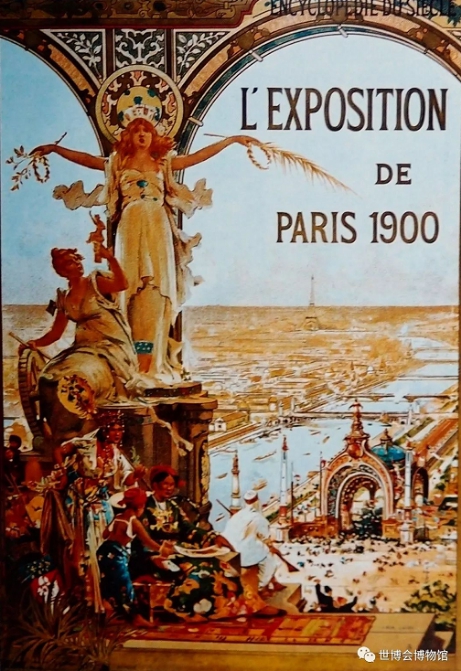
ˇˇˇˇPoster of Expo 1900 Paris
ˇˇˇˇOfficial Name: Expo 1900 Paris
ˇˇˇˇDates: 15/04/1900 - 12/11/1900
ˇˇˇˇTheme: 19th century: an overview
ˇˇˇˇCategory: World Exhibition
ˇˇˇˇOfficial Designation: LˇŻExposition de Paris 1900
ˇˇˇˇVisitors: 50,860,801
ˇˇˇˇArea (ha): 120
ˇˇˇˇParticipants: 40
ˇˇˇˇPlace of honor for Art Nouveau
ˇˇˇˇWhereas the first world's fairs rooted in the Industrial Revolution, the Exposition of 1900 is different because of its artistic approach and its promotion of Art Nouveau.
ˇˇˇˇThe expo exhibited many art nouveau works, such as jewelry designed by Mr. George Fukai, furniture design of the Finnish Pavilion, and glass designed by Tiffany.
ˇˇˇˇMucha, Fukai: The most vivid imagination
ˇˇˇˇIn recent years, Mr. George Fukai stood out from Art salon, and his works were elegant and charming. In this world expo, the small pieces of jewelry displayed by him were as charming as always. He also displayed stained-glass windows, which were highly decorative.
ˇˇˇˇ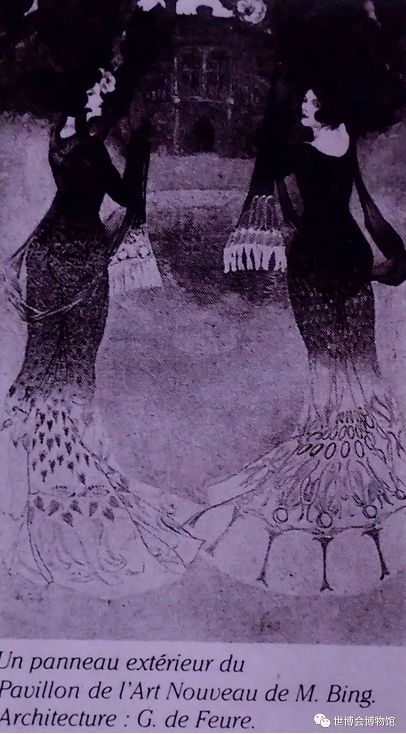
ˇˇˇˇExterior decorative painting of Art Nouveau Pavilion
ˇˇˇˇThis style came from Mucha, the Slavic artist had a rich imagination and an unusual variety of expressive techniques. He was good at painting posters and prints. In addition, he was also obsessed with sculpture, architecture, clothing, etc. He was always eager to express his most gorgeous imagination with pure gold or other precious raw materials. If Mucha's dream ever came true, he must thanked Mr. George Fukai who provided the chance.
ˇˇˇˇFurniture design in Finland Pavilion
ˇˇˇˇIn any case, you should stopped in the small exhibition hall designed by Mr. Gallon, as the decorations and furniture inside were all designed by him. Of course, to understand this work, we have to imagine an unusual life ¨C a rural life; though the hall was almost a farmhouse, Mr. Gallon wished to give it the elegance of family, the leisure and simple lines of the countryside.
ˇˇˇˇ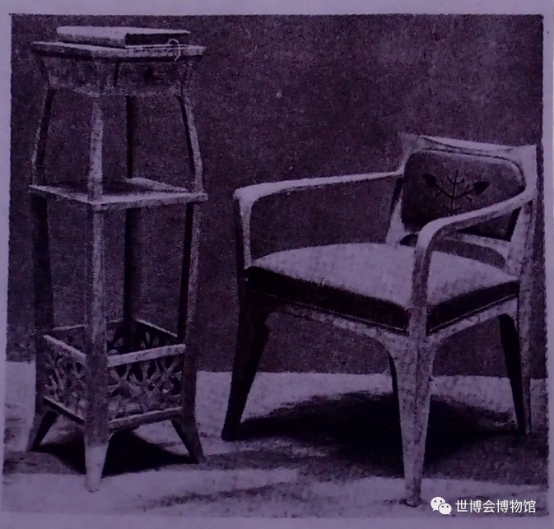
The furniture designed by Mr. Gallon for Finland Pavilion
ˇˇˇˇLouis Tiffany's design won a gold trophy
ˇˇˇˇLouis Tiffany was closely related to the Art Nouveau movement in the late 19th Century. His works include a large number of stained glass windows, glass lamps, glass mosaics, ceramics, jewelry, glazes and metal products. His complicated decorative style became the characteristic of American Art Nouveau Movement.
ˇˇˇˇIn Expo 1900 Paris, he showed new works which used Inlaid glass and mosaic, multi-colored glass bottles, enamel and other crafts, and the colorful glass window "Four Seasons" won the gold trophy.
ˇˇ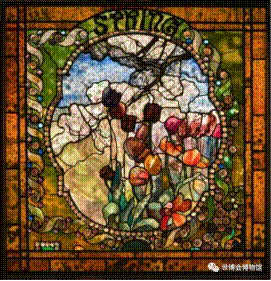
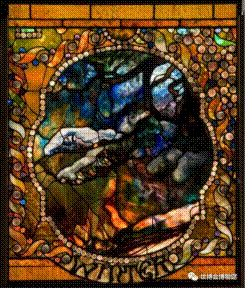
ˇˇˇˇ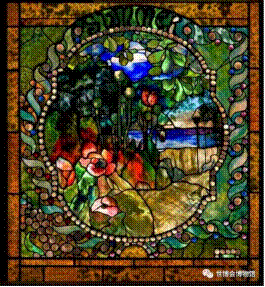
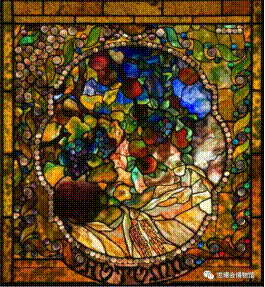
ˇˇˇˇColorful glass window "Four Seasons"
ˇˇˇˇA amazing way to the future
ˇˇˇˇThe automatic walkway
ˇˇˇˇThe automatic walkway connected two Expo sites. It looked like an endless train. This "way to the future" was built on an elevated bridge on 7 meters above the ground.
ˇˇˇˇ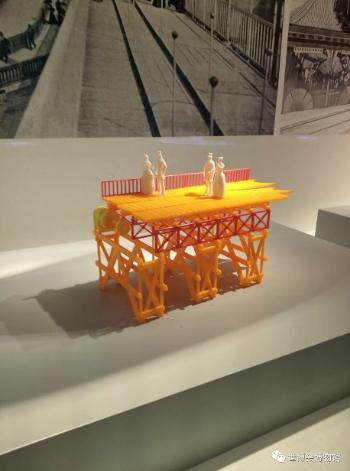
ˇˇˇˇ3D model of moving walkway in World Expo Museum Hall 2
ˇˇˇˇThe moving walkway was divided into three parts, the first part was horizontally static; the second part was at the medium speed of 4 km / h; the third part was at the high speed of 8 km / h. People usually entered from slower corridor and moved to fast corridor to experience different speeds.
ˇˇˇˇThere was a cartoon called "Three Stages of Life", which skillfully used the walking speed of three age groups to metaphor the speed of these three walkways.
ˇˇˇˇ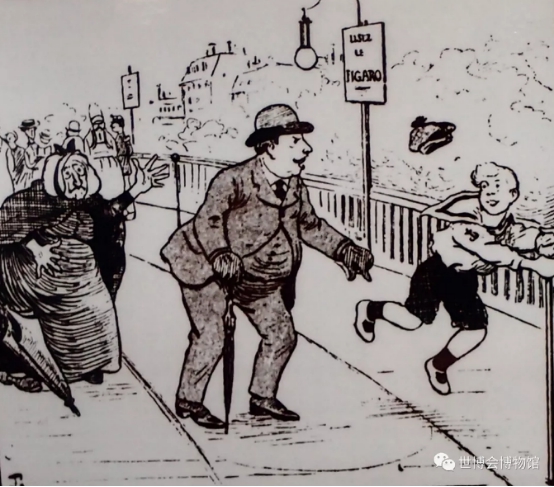
ˇˇˇˇ"Three Stages of Life"
ˇˇˇˇSimultaneously, there was a small electric train taking the same root but not as exciting. The name of the electric train is "Deauville", it moved on rails like that in many small amusement parks.
ˇˇˇˇ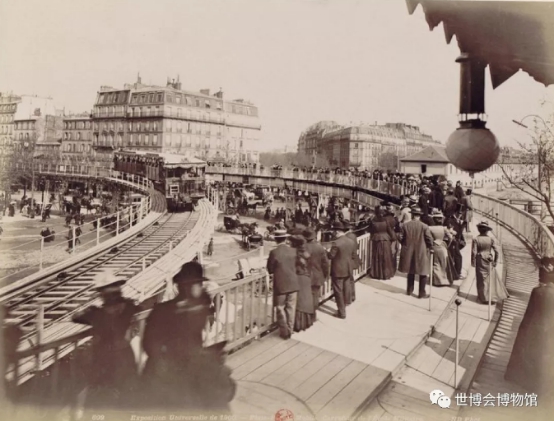
ˇˇˇˇElectric train beside automatic walkway
ˇˇˇˇThe first subway in Paris was opened.
ˇˇˇˇThe subway designed and constructed by Fulgence Bienventie was completed in July 14, 1900, before the Expo 1900 Paris. Benefited from the birth of this transportation, people's daily life had undergone revolutionary changes since then. However, there are so many celebration activities and miracles accomplished in expo that even the birth of the MTR was ignored.
ˇˇˇˇ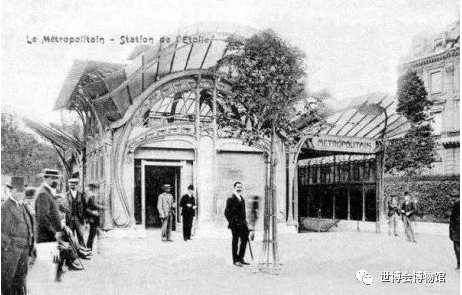
ˇˇˇˇThe first subway opened for operation during Expo 1990 Paris
ˇˇˇˇThe entrance of Paris subway was designed by Hector Guimard. At that time, there was only one route from Porte Vincennes to Porte Maillot, each ticket cost 15 centime. To get to Champs Elysees Street, you had to get off at the Clemenceau Station, because the Concorde Station was not built at that time. The success of Paris subway was obvious: there were 10 million passengers in the first four months from establishment until November 12th.
ˇˇˇˇA Space-time Journey with perfect experiences
ˇˇˇˇA sea trip designed by Hugo Alessi
ˇˇˇˇVisitors had real touristsˇŻ experience with their rocking chairs put on the side of the board. They were very comfortable and each person had a square meter of space to move around. The shaking of the hull, the illumination, the strong sea breeze and the salty smell of the sea made them feel that they were sailing from Villefranche to Constantinople.
ˇˇˇˇ
ˇˇˇˇPeople experiencing sea trips
ˇˇˇˇThe public agreed that the sea trip is undoubtedly the most interesting attraction. The artists who designed the attraction spared no effort to draw wonderful pictures, which aimed at improving the artistic taste of the public and increasing their knowledge of geography. How vivid were the geography classes that the students took here. Certainly nobody complained about learning the Mediterranean and its coasts in this way.
ˇˇˇˇWatch the moon using 1m-diameter telescope
ˇˇˇˇFrom the end of the 19th century to the beginning of the 20th century, optical research was in the transition period from wave optics to quantum optics, and human's understanding of light was deepening. In the Palace of Optics, you could see the cold laser, the magic mirror, the flash ray, the phosphorescent dancer and the hidden world in a drop of water, and so on.
ˇˇˇˇ
ˇˇˇˇWatch the moon using 1m-diameter telescope: check the glass for making telescope lens
ˇˇˇˇMoreover, activities such as "To see the moon as if it was one meter away" also arouse the imagination and curiosity of millions of people. There was a 60-meter-long astronomical instrument with a camera which gave people the feeling of watching the moon closely. It seemed that everyone is only 58 kilometers away from the moon! The image reflector on this instrument was called" Sterostat ", and it is still kept in the lobby of the northern side of the Observatoire de Paris today.
ˇˇˇˇA railroad journey across Siberia
ˇˇˇˇAudiences were sitting in a carriage of a luxury train which was shaking slightly. From Moscow to Beijing, the scenery slowly showed on windows, and even the scene of main train stations alongside the root was vividly presented. The show not only satisfied the curiosity of the public, but also made an excellent advertisement for the railway company.
ˇˇˇˇ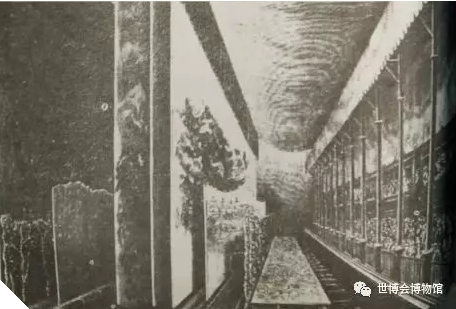
ˇˇˇˇA journey across Siberia: simulated railway carriage and four-layer scenery
ˇˇˇˇThe extraordinary light and shadow artistry show
ˇˇˇˇIn Expo 1900 Paris, the movable projector invented by Lumiere brothers was displayed. In history, the first expo that produced a filming of itself was also originated in 1900. The fragment showed at the end of hall 1 in World Expo Museum is the live scene depicting the session.
ˇˇˇˇ
ˇˇˇˇThe video in Hall 1
ˇˇˇˇGramophone Theatre
ˇˇˇˇ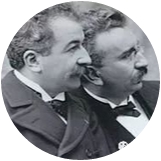
ˇˇˇˇLumiere brothers
ˇˇˇˇThe Lumiere brothers who invented the film were invited as VIP guests to show the movie on a huge screen of 21-meters-width and 16-meters-height at the Machine Gallery. The screen was hanging in the center of the Mechanical Palace. It can be seen from both the front and the back. It was a super-large screen movie that can accommodate 25,000 viewers.
ˇˇˇˇ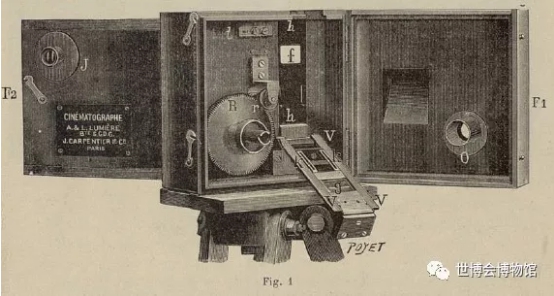
ˇˇˇˇFilm projector
ˇˇˇˇYou can compare it with the famous Grand Rex, the screen of which is no more than 25*11 meters. In expo 1900, there was a sound motion pictureŁˇ This was the miracle created by Phone Cine Theatre, which used the gramophone to produce sound synchronously while the film is being shown.
ˇˇˇˇ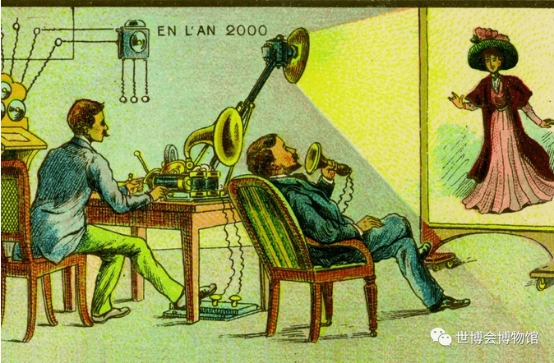
ˇˇˇˇFilm-Photo- Telegraph
ˇˇˇˇSanson circular-screen
ˇˇˇˇThis kind of film was shown like a balloon moving in the air! In a polygonal garden hall with a circumference of 93 meters, 10 projectors operated simultaneously to synthesize a film depicting a magnificent scene. Audiences can safely sit in a balloon-like hall and and enjoy the beautiful scenery.
ˇˇˇˇ
ˇˇˇˇSanson circular-screen film
ˇˇˇˇToday, the filming and projection machine invented by Cineorama inventor Raoul Grimoin Sanson still attract visitors in the Museum of Craft of Paris 3 district.
ˇˇˇˇIn every aspect, Expo 1900 Paris reflected the Art Nouveau movement in France at that time. People could simulate the real-life experience of space-time travel, flying freely in the artistic world of movies. As the commencement of the new century, this expo created paradise, showing people's imagination of the future. According to the records of the Bureau International des Expositions, Expo 1990 Paris had a total profit of 7 million francs.